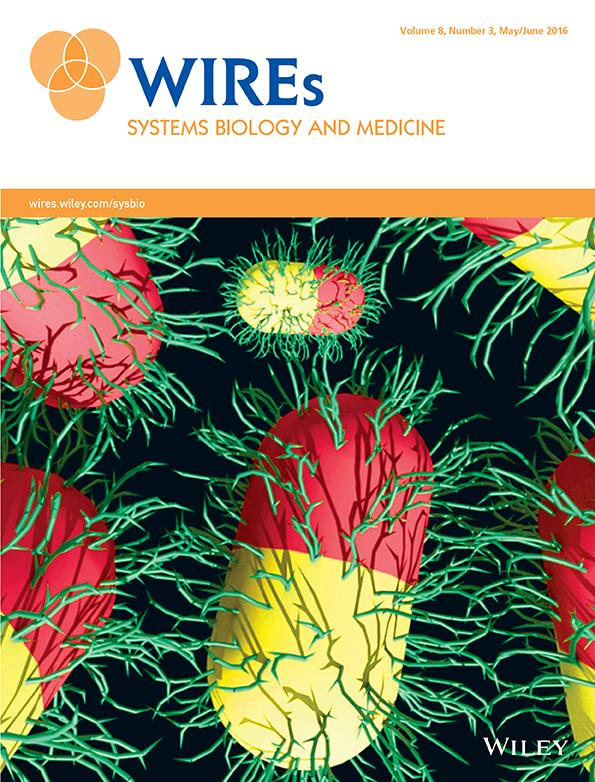Toward modeling locomotion using electromyography‐informed 3D models: application to cerebral palsy
IF 7.9
Q1 Medicine
Wiley Interdisciplinary Reviews-Systems Biology and Medicine
Pub Date : 2017-03-01
DOI:10.1002/wsbm.1368
引用次数: 36
Abstract
This position paper proposes a modeling pipeline to develop clinically relevant neuromusculoskeletal models to understand and treat complex neurological disorders. Although applicable to a variety of neurological conditions, we provide direct pipeline applicative examples in the context of cerebral palsy (CP). This paper highlights technologies in: (1) patient‐specific segmental rigid body models developed from magnetic resonance imaging for use in inverse kinematics and inverse dynamics pipelines; (2) efficient population‐based approaches to derive skeletal models and muscle origins/insertions that are useful for population statistics and consistent creation of continuum models; (3) continuum muscle descriptions to account for complex muscle architecture including spatially varying material properties with muscle wrapping; (4) muscle and tendon properties specific to CP; and (5) neural‐based electromyography‐informed methods for muscle force prediction. This represents a novel modeling pipeline that couples for the first time electromyography extracted features of disrupted neuromuscular behavior with advanced numerical methods for modeling CP‐specific musculoskeletal morphology and function. The translation of such pipeline to the clinical level will provide a new class of biomarkers that objectively describe the neuromusculoskeletal determinants of pathological locomotion and complement current clinical assessment techniques, which often rely on subjective judgment. WIREs Syst Biol Med 2017, 9:e1368. doi: 10.1002/wsbm.1368利用肌电图三维模型建模运动:在脑瘫中的应用
本立场文件提出了一个建模管道,以开发临床相关的神经肌肉骨骼模型,以了解和治疗复杂的神经系统疾病。虽然适用于各种神经系统疾病,但我们提供了脑瘫(CP)背景下的直接管道应用实例。本文重点介绍了以下技术:(1)从磁共振成像中开发的用于逆运动学和逆动力学管道的患者特定节段刚体模型;(2)有效的基于种群的方法来推导骨骼模型和肌肉起源/插入,这对种群统计和连续体模型的一致创建有用;(3)连续体肌肉描述,以解释复杂的肌肉结构,包括空间变化的肌肉包裹材料特性;(4) CP特有的肌肉和肌腱特性;(5)基于神经的肌电图预测肌肉力量的方法。这代表了一种新的建模管道,首次将肌电图提取的神经肌肉行为特征与先进的数值方法结合起来,用于模拟CP特异性肌肉骨骼形态和功能。将这种管道转化为临床水平将提供一类新的生物标志物,客观地描述病理运动的神经肌肉骨骼决定因素,并补充当前通常依赖主观判断的临床评估技术。中国生物医学工程学报,2017,32(1):444 - 444。doi: 10.1002 / wsbm.1368
本文章由计算机程序翻译,如有差异,请以英文原文为准。
求助全文
约1分钟内获得全文
求助全文
来源期刊

Wiley Interdisciplinary Reviews-Systems Biology and Medicine
MEDICINE, RESEARCH & EXPERIMENTAL-
CiteScore
18.40
自引率
0.00%
发文量
0
审稿时长
>12 weeks
期刊介绍:
Journal Name:Wiley Interdisciplinary Reviews-Systems Biology and Medicine
Focus:
Strong interdisciplinary focus
Serves as an encyclopedic reference for systems biology research
Conceptual Framework:
Systems biology asserts the study of organisms as hierarchical systems or networks
Individual biological components interact in complex ways within these systems
Article Coverage:
Discusses biology, methods, and models
Spans systems from a few molecules to whole species
Topical Coverage:
Developmental Biology
Physiology
Biological Mechanisms
Models of Systems, Properties, and Processes
Laboratory Methods and Technologies
Translational, Genomic, and Systems Medicine
 求助内容:
求助内容: 应助结果提醒方式:
应助结果提醒方式:


